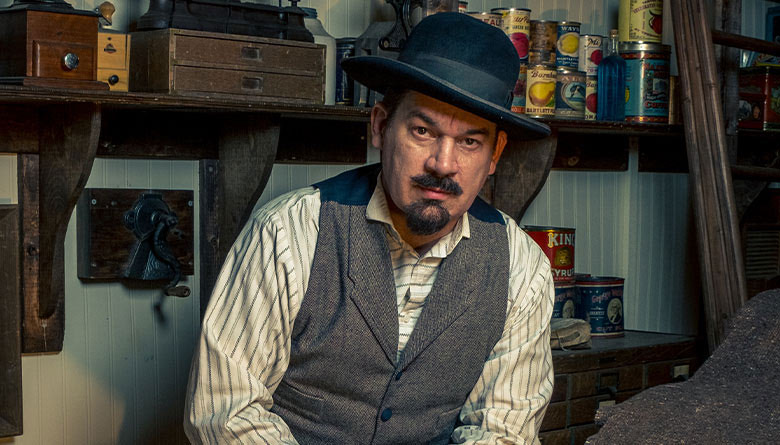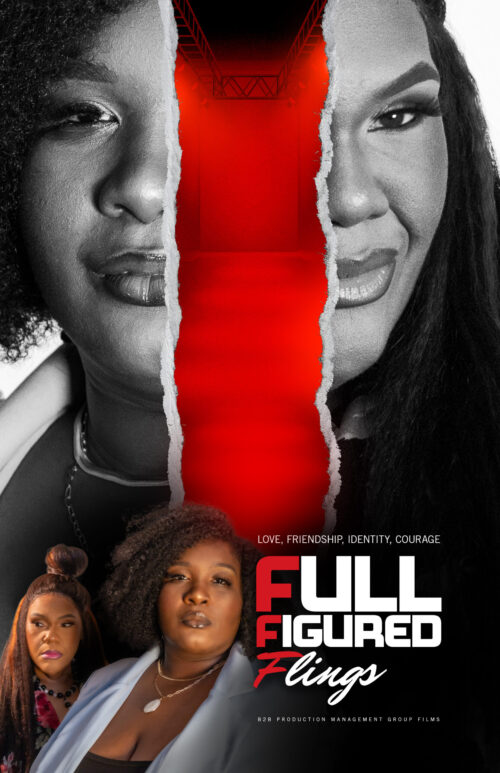We Speak Actors
Actor Travis Lee Eller appears in ‘Elkhorn’, a new TV series about the young Roosevelt

Travis Lee Eller is known for appearing in Westerns, but unlike other Hollywood actors he also supplies the costume department with authentic-looking outlaw hats! Originally from North Carolina and now based in LA, Travis started in entertainment as a TV stage manager and since 2012 has appeared in numerous films, many of them Westerns. He also has his own hat-making business, Ugly Outlaw Hats. He wrote and directed the short film ‘The Killer: A Fight in July’, which was nominated for Best Supporting Actor and Actress at the Wild Bunch Film Festival 2016. He also wrote and starred in the short film ‘Bad Men And The Devil’, for which he won a Best Actor award and the film won Best Western Short at the Genre Celebration Film Festival 2017. Now Travis is appearing in the TV series ‘Elkhorn’, about Theodore Roosevelt abandoning politics to become a cattleman in the lawless Dakota Badlands; it is available to watch on the INSP network and various streaming platforms from 11 April 2024.
What was it like working on ‘Elkhorn’?
“It was amazing!”
“The entire cast and crew were a pleasure to work with.”
“It was great seeing it all come together, from the audition process to the sets being built and finally to that first moment you hear the director call: ‘Action!’. I loved every minute of it. The Western genre is something I’m extremely interested in and having this opportunity to work in this environment again and tell this particular story got me really excited, especially knowing there’s a true history behind it.”
Can you tell us a bit about your role?
“I play Joe Ferris, who became a dear friend to Teddy Roosevelt. He’s a shopkeeper in the Dakota Territory town of Medora. Joe’s a nice guy, he knows everyone and everything about the town, but at the same time he’s no pushover and is stern when he has to be. He loves his town and wants to see it thrive. He also acts as the town postmaster and bookkeeper for Roosevelt’s business affairs. Joe was an interesting role for me to take on. I was so used to playing a villain in Westerns, that when it was time to be the good guy I had a moment of thinking: ‘How am I going to do this?’ Then I realised how ridiculous that sounded for an actor to say, and I screwed my head on straight again and jumped in.”
Who will enjoy this TV series?
“I hope as many people as possible will tune in. If you’re a history buff, interested in Theodore Roosevelt, or a Westerns fan in general, then ‘Elkhorn’ will be right up your alley. It’s great because there’s so much literature on Teddy Roosevelt and his life as President and conservationist, but there’s not really too much out there to watch. I’ve never seen any show or film about this particular time of his life.”
“I hope viewers have the same interest and sense of discovery I had when learning about this part of his history.”
What have been your favourite projects to date?
“I’ve had a few great projects I’ve been part of, including guest-starring roles on major network shows and lead roles in independent films, but I think some of my favourite roles were in smaller productions in my early pursuit of acting. It was all about the learning experience, and the knowledge I took away from each of those, be it technical or emotional. If I had to pick a film of mine that I really enjoyed doing, it would be the short Western ‘Only God Forgives’, which is available to watch on Amazon Prime.”
What are you up to next?
“Negotiations and auditions are happening, but other than that I’m continuing with my hobby, which is hat-making. I own a small business called Ugly Outlaw Hats, which allows me to stay busy with my hands. It’s also offered me an avenue into film and television, as I’ve made a few hats for various productions, including ‘Elkhorn’.”
To find out more about Travis, visit www.travisleeeller.com
Featured photo credit: Morgan Weistling
We Speak Actors
Full-Figured Flings Teaser Nears 14K Views – Director of Photography Offers Special Father’s Day Release

Back 2 the Basics Production Management Group is proud to announce the official teaser premiere for FFF: Full-Figured Flings, a bold and unapologetic new film celebrating full-figured women and challenging the norms of beauty in Hollywood. Clocking in at just 46 seconds, the teaser doesn’t waste a moment, delivering a powerful visual and emotional punch that sets the tone for a project rooted in body positivity, size inclusivity, and cultural truth.
Premiering ahead of the 20th anniversary of Phat Girlz (2006), FFF serves as both homage and evolution. The film expands the conversation around colorism, sizeism, and shapeism, spotlighting women who have often been cast aside, sidelined, or silenced.

“This teaser is more than a preview—it’s a declaration,” said Lillie Mae Jones, creator and producer. “FFF is our love letter to the women who’ve never been centered but have always been essential. We’re not just telling stories—we’re shifting the lens.”
FFF: Full-Figured Flings is currently in development as a non-union independent production, with plans to release in 2026. The film invites audiences and allies to follow, support, and amplify the message through community engagement, open casting calls, and creative collaborations—including the launch of a nationwide call for a “Big Girl Anthem” to serve as the film’s official theme song.


Accept the Challenge…
The buzz is building fast around the highly anticipated full-figured fashion experience FFF, and now there’s a challenge on the table that fans won’t want to miss.
After racking up 11,000 views in less than 10 days, the official teaser video for FFF on YouTube is quickly gaining momentum. And now, the film’s Director of Photography, Dominique Perry, has thrown down a bold offer:
“If we hit 20,000 views before Saturday, June 14th, I’ll drop an exclusive second teaser on Father’s Day.”
This is more than a film—it’s a movement. FFF is a high-fashion, high-impact visual celebration of full-figured women taking a stand for representation, inclusion, and power on and off the runway.
Here’s how you can help make it happen: Watch the teaser now on YouTube. Like, comment, and subscribe. Share it with your community and post why YOU stand in solidarity with full-figured women
Watch here for a taste of the boldness, beauty, and energy
-

 We Speak Music1 week ago
We Speak Music1 week agoSinger/Songwriter Aro Rose To Release Highly Anticipated New Single “Live Without You” On June 29th, 2025
-

 We Speak Soccer1 week ago
We Speak Soccer1 week agoFrom Small Steps to Big Goals: How Alianna-Reyne Basa Became a Fearless Striker with a Champion’s Heart
-

 We Speak Soccer1 week ago
We Speak Soccer1 week agoBrylee Tagle: Crafting Excellence on the Soccer Field with Vision, Confidence, and a Passion for the Game
-

 We Speak Volleyball1 week ago
We Speak Volleyball1 week agoEyes on the Ball, Heart in the Game: Ryan Jomo’s Volleyball Journey as a Libero Who Refused to Settle for Less

